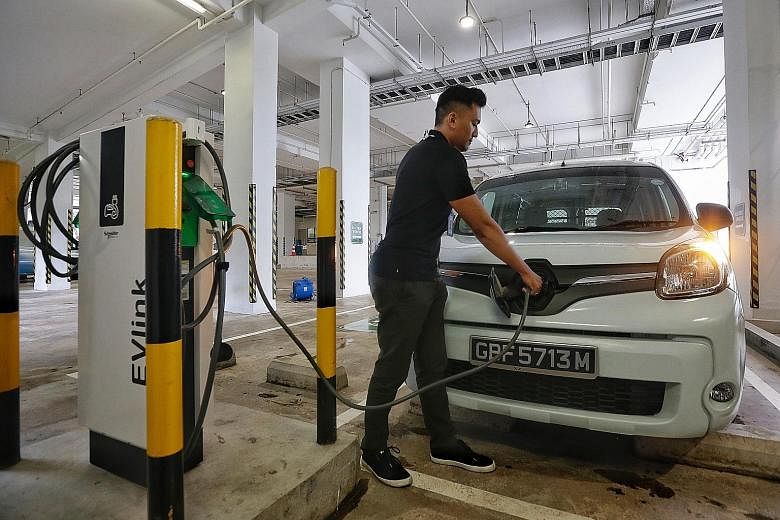As Singapore is ramping up the charging infrastructure for electric cars, I would like to suggest some initiatives that the Government can explore to encourage their adoption as motorists are waiting for a charging station to pop up near their homes. This waiting game needs to end as we urgently need to act now.
As Singapore is highly built up, few people have access to an electrical outlet to conveniently charge the car. Given the long charging time, it is also not practical to have public charging points as it will lead to long queues and drivers will spend hours just trying to charge the cars. The short driving range of electric cars also does not help.
However, there are now mobile chargers that operate like power banks for smartphones. You can take the mobile charger - slightly more than twice the size of a typical car battery and costing from $17,000 - home, then charge the car while driving or when you have arrived at your destination.
Such chargers can add an additional 23km to 24km to the range of the electric vehicle.
Given that Singapore cars typically clock 20,000km per year, this averages to about 400km per week. Most electric vehicles have a range of around 300km.
Since charging through a mobile charger at home will add an additional 23km to 24km per day, this translates to about another 160km per week on top of the existing range of 300km, making it 460km. Therefore, electric vehicles need to go to a charging station only once a week, with 60km to spare.
As most Singaporeans like to visit the malls on weekends, electric vehicles could be charged while owners are shopping or having a meal at the malls. Ideally, they should be solar-powered chargers, so it would be a fully sustainable energy source.
Such technologies are also already available, and the Government can subsidise malls with sizeable open parking spaces, such as the one at Giant Tampines where there are hundreds of parking spaces that could be equipped with solar chargers.
During off-peak hours, the solar power generated could then be sold to the grid. During peak hours, the mall would have an additional revenue stream from charging electric vehicles.
Aside from electric cars, motorcycles could be the first to go electric as most models of electric motorcycles already have detachable batteries that can be taken home to charge.
While waiting for electric cars to become popular, the Government could amend the law that prohibits engine modifications to allow petrol cars to be modified into hybrid cars or electric cars, especially if the car is already 10 years old and waiting to be scrapped. The life of the car can be extended with the modification and save precious resources.
Charlie Tan Keng Lai

